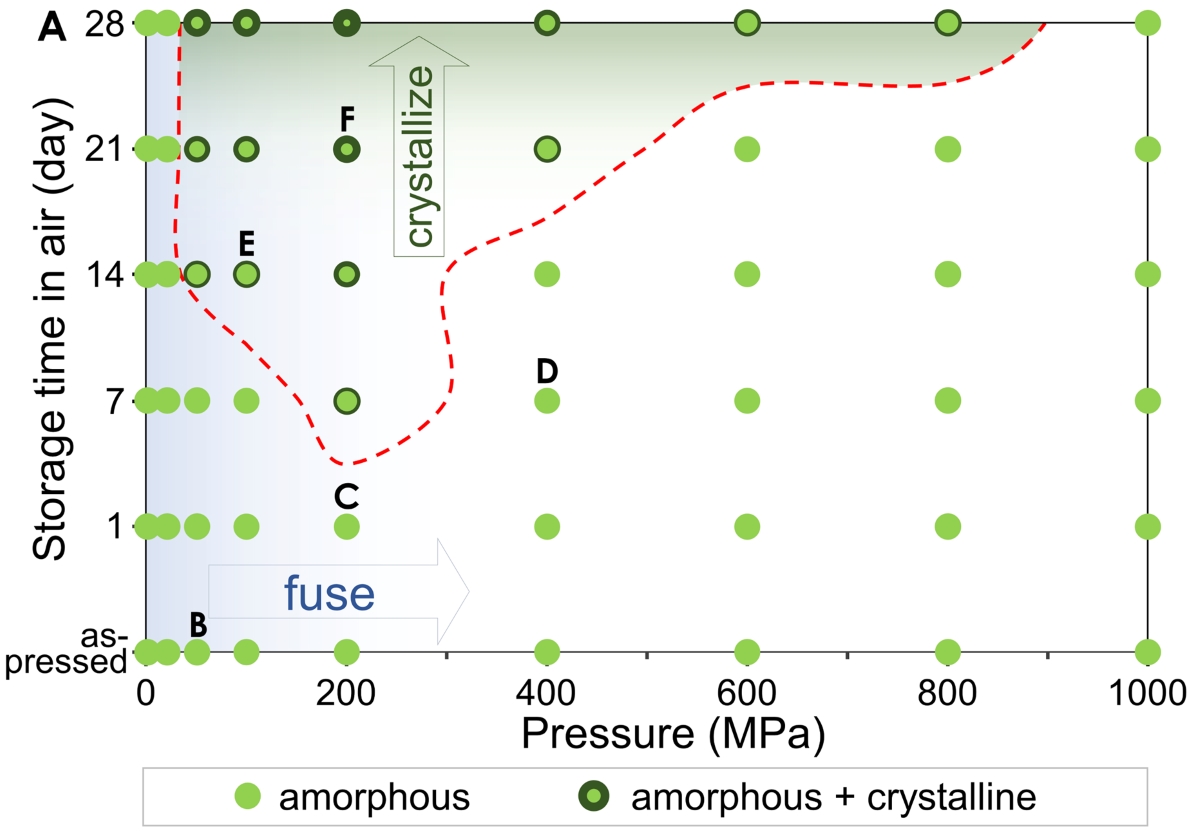CityUHK researchers discover eco-friendly way to make ceramics inspired by nature
Modern technology typically uses high temperatures to manage the hydration of ceramics, but even the latest methods can only control overall hydration. In contrast, nature can create bioceramics with customizable hydration profiles and crystallization traits under mild conditions.
Recently, a research team from the City University of Hong Kong (CityUHK) reported a potential biomimetic mineralization strategy; they demonstrated that hydration and crystallization of ceramics can be controlled by compressing purely inorganic gels (PIGs) made from common ions found in organisms (e.g., Ca2+, Mg2+, CO32?, and PO43?). These PIGs can produce transparent ceramic tablets under mild pressure, with the pressure level influencing their hydration and crystallization behaviors.
“For at least half a billion years, life has been building stunning structures out of ceramics. How life handles ceramics under the aqueous biocompatible conditions has puzzled scientists for centuries. This study offers fresh insights into biomineralization.” explained by Professor Lu Jian, Dean of the College of Engineering and Chair Professor of the Department of Mechanical Engineering at CityUHK.
“The key here is to first obtain a stable amorphous mineral gel precursor, which can be accomplished by simply mixing salt solutions. This stable gel then enables convenient storage, transportation, molding, and transformation into bioceramic objects with desired properties.” Supplemented by Professor Li Yangyang, Associate Professor from the Department of Materials Science and Engineering at CityUHK.

This research demonstrated mineralization in biocompatible aqueous settings, converting salt solutions into rigid transparent ceramic disks. It provided insights into how life adjusts the hydration state of amorphous bioceramics at mild temperatures, revealing that self-ordered water molecules are crucial for crystallization. Additionally, it discovered a biocompatible synthesis route for cattiite, a natural biomineral that promotes osteogenic activity, shedding light on its production under physiological conditions.
It is worth mentioning that although the pressure range used in this study (≤ 1 GPa) may seem large, when applied at the micro- or nano-scale, the required force is actually quite minuscule. Considering that minerals in biological organisms are typically formed by the stacking of nanoparticles, life may only require very low force to accomplish biomineralization processes.

If scientists can understand and control the hydration state, fusion, phase transition, and other properties of ceramics under mild conditions, it would pave the way for a new, more environmentally friendly, and cost-effective advanced ceramic process. Furthermore, such research may also contribute to environmental science. For example, by understanding how organisms regulate the hydration state and crystallization behavior of their minerals, we can better protect and restore ecosystems such as coral reefs.

The study, titled "From salt water to bioceramics: Mimic nature through pressure-controlled hydration and crystallization", was recently published in the scientific journal Science Advances.
For enquiry, please contact Professor Lu Jian, Dean of the College of Engineering and Chair Professor of the Department of Mechanical Engineering, by email at jianlu@cityu.edu.hk.